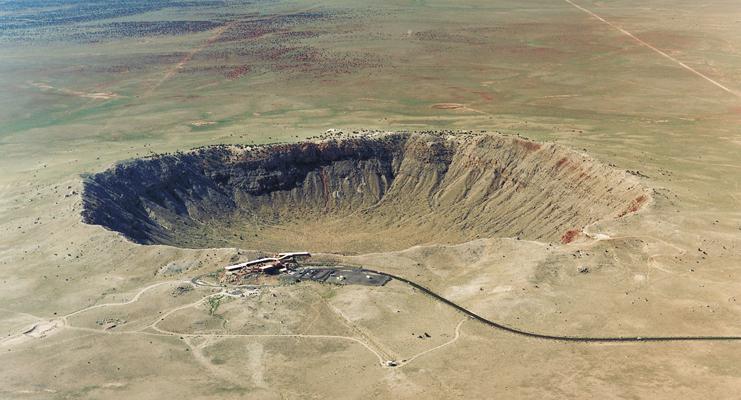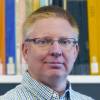Flagstaff Character: Gene Shoemaker
Gene Shoemaker's era-defining legacy of research is first-rate for any scientist in the world, let alone one who called Flagstaff home for three decades.

Flagstaff knows a thing or two about scientists. For a century and a half, astronomers, botanists, geologists, biologists, paleontologists, meteorologists, and about any other ‘ologist that comes to mind have ventured here to study the area’s abundance of natural resources. So when one of them is singled out as the cream of this very rich crop, one that would find a place on the Mount Rushmore of Flagstaff scientists, that is saying something.
FLAGSTAFF CHARACTER: GENE SHOEMAKER
Gene Shoemaker is that person, and his era-defining legacy of research is first-rate for any scientist in the world, let alone one who called Flagstaff home for three decades.
Early Life
Eugene (Gene) Merle Shoemaker was born April 28, 1928 in Los Angeles. He quickly developed an interest in geology, one that would drive him throughout his professional career. He would go on to lead numerous scientific enterprises and is remembered by colleagues as much for his sincerity and charm as for his scientific insight and dedication.
A 1951 visit to northern Arizona would ultimately define the direction of his career. He and his bride Carolyn were on their way back home to Grand Junction, Colorado after spending the summer carrying out geological fieldwork in the Southwest. As a geologist, Shoemaker was quite familiar with Meteor Crater but had never visited it. Too broke to afford the admission fee, the Shoemakers drove to the crater then parked their vehicle out of sight and crawled up the backside of the crater rim. When they peered inside, they were mesmerized by the magnitude of the chasm.
This experience inspired Gene to study Meteor Crater in order to understand the nature of such features. Contrary to the conventional wisdom of the time, he believed that Meteor Crater and similar depressions on the moon were caused by the impact of rocks from space, not from volcanic activity.
Flagstaff knows a thing or two about scientists. For a century and a half, astronomers, botanists, geologists, biologists, paleontologists, meteorologists, and about any other ‘ologist that comes to mind have ventured here to study the area’s abundance of natural resources. So when one of them is singled out as the cream of this very rich crop, one that would find a place on the Mount Rushmore of Flagstaff scientists, that is saying something. Gene Shoemaker is that person, and his era-defining legacy of research is first-rate for any scientist in the world, let alone one who called Flagstaff home for three decades.

Becoming an Astrogeologist
Shoemaker earned his PhD from Princeton University in 1960. For his dissertation, he wrote a seminal report proving the impact nature of Meteor Crater. Soon thereafter, while based in California, he helped establish the Astrogeology Branch of the United States Geological Survey (USGS). In 1963, he moved the office to Flagstaff and led the development of one of northern Arizona’s leading centers of scientific research.
Flagstaff’s Astrogeology Branch would encompass many projects through the years, from the mapping of planets to groundwater studies on Earth, but its original focus was to help learn about the moon and prepare the Apollo astronauts for their missions there.
Shoemaker took a leading role in the unmanned Ranger missions to the moon and hoped to one day become the first scientist to fly there and explore its surface. His dream never got off the ground, as during this time he was diagnosed with Addison’s disease, which kept him forever earthbound. He still played a key role in lunar exploration, however, as he helped school the astronauts in geological techniques.
A Big Discovery
Soon, he began applying what he had learned about impact craters on Earth and the moon to the solar system bodies that formed them: asteroids and comets. He spent years surveying the sky for so-called Earth-crossing bodies, whose orbits cross that of Earth and could therefore impact our planet. His wife, Carolyn, teamed up with him on much of this work and they discovered more than 30 comets, including a very special one called Shoemaker-Levy 9 that broke up into a train of fragments and impacted Jupiter in 1994.
This was the first time scientists had ever observed an impact on another planet, and the impacting body just happened to be discovered by the world’s leading expert on the subject—not a bad crowning achievement to a remarkable career. By this time he was officially retired, but was as busy as ever and still affiliated with both USGS and Lowell Observatory.

The Shoemaker Legacy
Shoemaker died tragically in 1997 at the age of 69 while doing what he loved, carrying out field work in Australia with his life and professional partner, Carolyn. Among many honors that came after his death was one bestowed by the Flagstaff Festival of Science. Festival leadership renamed the annual kick-off speech the Shoemaker Keynote Presentation.
Shoemaker also holds another distinction, which came about when the Lunar Prospector mission to the moon carried some of his ashes in a capsule. When the mission was completed on July 31, 1999, planners intentionally crashed the spacecraft onto the moon, making Shoemaker the first person whose remains rest on a world other than Earth.
Perhaps geologist Walter Alvarez, who with his father Luis devised the theory of an asteroid impact killing off the dinosaurs, summed up Shoemaker’s life best when he said “Rarely can there have been a scientist held both in as much respect and in as much affection as Gene Shoemaker.”

About the Author

Kevin Schindler
Kevin Schindler is a historian and writer who has called Flagstaff home since 1995. A fixture at Lowell Observatory during that time, he has also been an active member of the Flagstaff community, serving on several boards and committees. He has written more than 400 magazine and newspaper articles on a variety of subjects, particularly science, local history, and baseball. The author of three books, he also contributes a regular astronomy column to the Arizona Daily Sun.